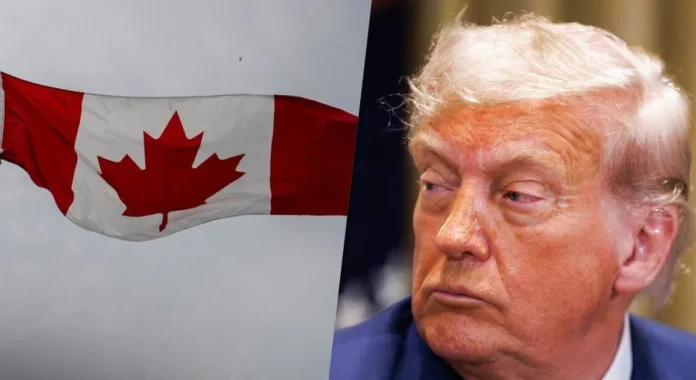Trump launches tariff war, hitting Canada with 35% and threatening dozens more with sweeping hikes
Donald Trump has reignited global trade tensions with a bold threat to impose a 35% tariff on Canadian imports, accusing the country of failing to act on fentanyl smuggling and maintaining unfair trade policies. In a sharply worded letter sent to Canadian Prime Minister Mark Carney, the US president criticised both tariff and non-tariff barriers, calling them serious obstacles to trade.
Trump’s letter made it clear: the fentanyl crisis was not the only issue straining relations. “Canada has many tariff and non-tariff policies and trade barriers,” he wrote, linking these grievances to a wider plan for a sweeping tariff offensive.
The warning doesn’t stop at Canada. Trump revealed that 23 countries have already received similar letters, including Brazil, which faces a 50% tariff—partly in response to the ongoing legal saga surrounding former president Jair Bolsonaro, who is on trial over alleged attempts to stay in office after his 2022 election defeat.
Trump himself faces similar accusations, having been indicted for efforts to overturn his own 2020 election loss.
The 35% tariff on Canada and other increased rates are set to take effect on 1 August, unless negotiations alter the course. Trump has floated the idea of a blanket tariff hike—between 15% and 20%—on imports from most countries not yet covered under existing agreements.
Speaking to NBC News, Trump doubled down: “All of the remaining countries are going to pay—whether it’s 20% or 15%. We’ll work that out now.”
The comments come on the heels of Trump’s “Liberation Day” tariffs announced on 2 April, which initially rattled financial markets, triggering a major sell-off. After that turmoil, Trump introduced a 90-day negotiating period, during which a 10% baseline tariff was temporarily applied to most imports.
Despite the upheaval, Trump insists the approach is working. “I think the tariffs have been very well-received. The stock market hit a new high today,” he claimed.
In response, Canadian Prime Minister Mark Carney defended his government’s actions. “Throughout the current trade negotiations with the United States, the Canadian government has steadfastly defended our workers and businesses. We will continue to do so as we work towards the revised deadline of August 1.”
Carney also pushed back on the fentanyl accusations, asserting: “Canada has made vital progress to stop the scourge of fentanyl in North America. We are committed to continuing to work with the United States to save lives and protect communities in both our countries.”
While North American relations hit a new low, Trump hinted at an entirely different front in the coming days. He teased a “major statement” on Russia and its war in Ukraine, telling reporters, “I’m disappointed in Russia, but we’ll see what happens over the next couple of weeks.”
He added cryptically, “I think I’ll have a major statement to make on Russia on Monday.”
Meanwhile, diplomatic signals continue behind the scenes. Russia’s Deputy Foreign Minister Sergei Ryabkov said another round of US-Russia talks may occur before summer ends, hinting at renewed communication amid tense standoffs.
Despite having recently struck a trade deal with the United Kingdom, which cuts tariffs on cars and aerospace products, Trump’s latest tariff war signals a return to aggressive, unilateral trade action.
As markets brace for impact and allies express concern, one thing is clear: Trump’s second term is taking shape as one of tariff brinkmanship and global trade conflict—and Canada, it seems, is just the beginning.
